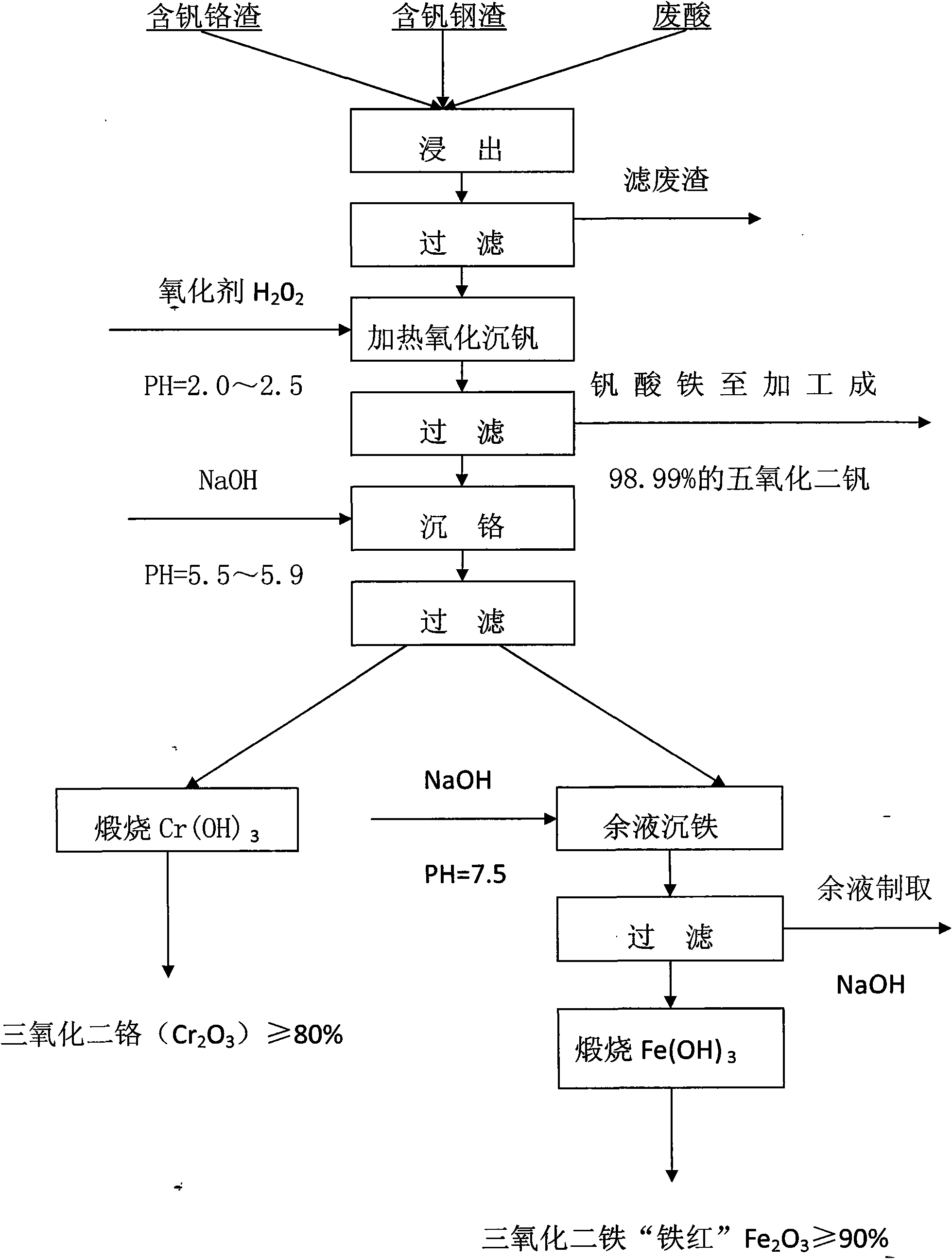Process for extracting vanadium and chromium from chromic slag by using waste acid of titanium powder plant
A technology for vanadium-chromium slag and steel slag is applied in the technical field of extracting vanadium and chromium from chromium slag by using waste acid of a titanium dioxide factory, which can solve problems such as difficult separation, reduce production costs, solve the problem of waste acid treatment and environmental protection. Problems, anti-risk ability and the effect of strengthening market competitiveness
- Summary
- Abstract
- Description
- Claims
- Application Information
AI Technical Summary
Problems solved by technology
Method used
Image
Examples
Embodiment Construction
[0027] 1. Required raw materials:
[0028] ①Waste acid from titanium dioxide factory (chemical composition table)
[0029] ingredients
h 2 SO 4
SiO 2
al 2 o 3
FeO
MgO
MnO 2
CaO
TiO 2
As
content(%)
20.8
0.077
1.57
30.5
6.34
0.99
0.44
2.61
micro
[0030] ②Steelmaking steel slag (chemical composition table)
[0031] ingredients
V 2 o 5
CaO
SiO 2
FeO
MFe
MgO
content(%)
1.0
55
14
17
5
4
[0032] ③ Vanadium-containing chromium slag (chemical composition table)
[0033]
[0034] ④ Precipitating agent: sodium carbonate (Na 2 CO 3 ) Industrial grade 98%
[0035] ⑤ Vanadium-containing steel slag (V 2 o 5 1.0%)
[0036] ⑥Oxidant: Hydrogen peroxide (H 2 o 2 ) Industrial grade 25%
[0037] Two, leaching
[0038] Add about 22.5 tons of waste acid and 28 tons of wat...
PUM
 Login to View More
Login to View More Abstract
Description
Claims
Application Information
 Login to View More
Login to View More - R&D
- Intellectual Property
- Life Sciences
- Materials
- Tech Scout
- Unparalleled Data Quality
- Higher Quality Content
- 60% Fewer Hallucinations
Browse by: Latest US Patents, China's latest patents, Technical Efficacy Thesaurus, Application Domain, Technology Topic, Popular Technical Reports.
© 2025 PatSnap. All rights reserved.Legal|Privacy policy|Modern Slavery Act Transparency Statement|Sitemap|About US| Contact US: help@patsnap.com



